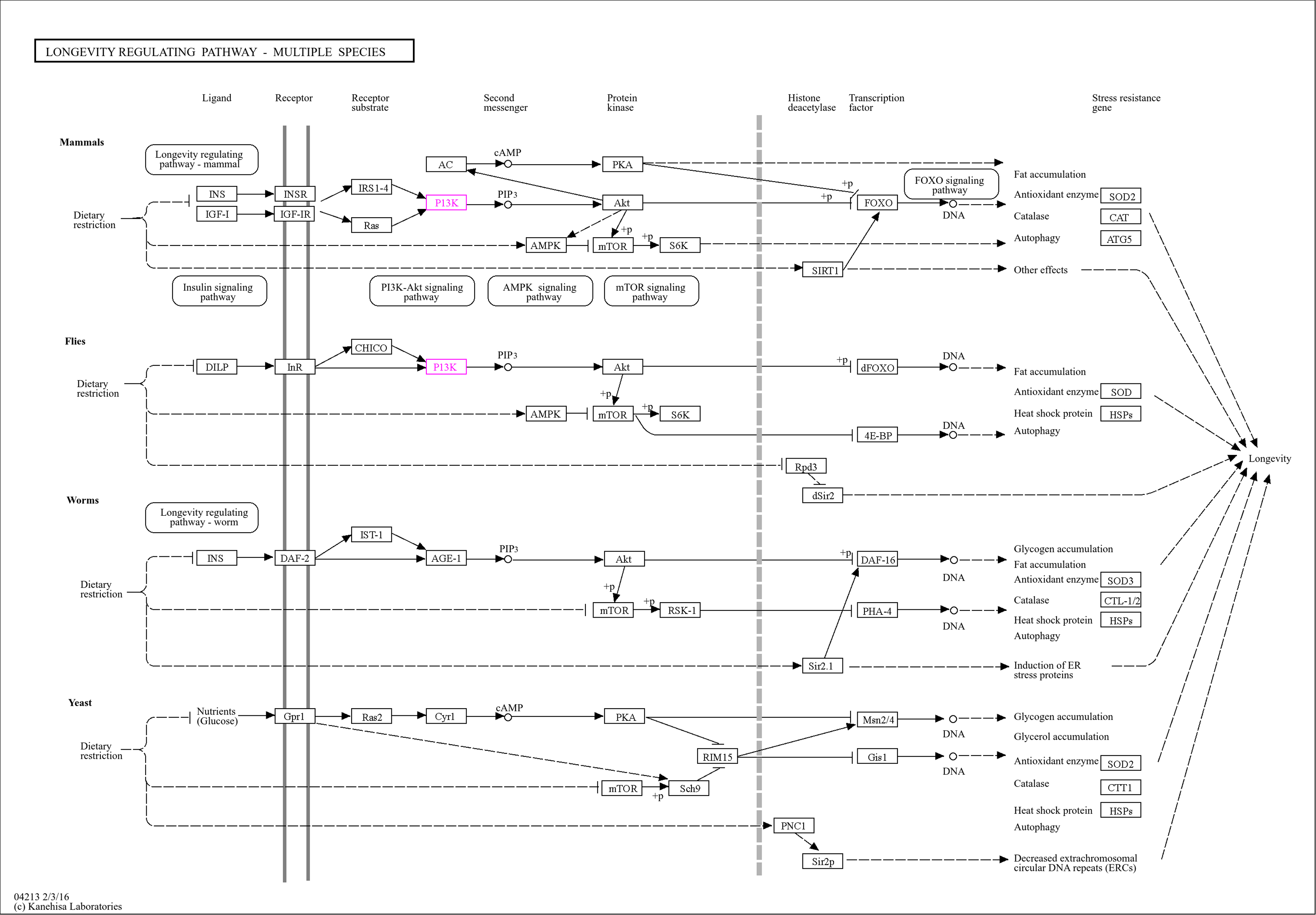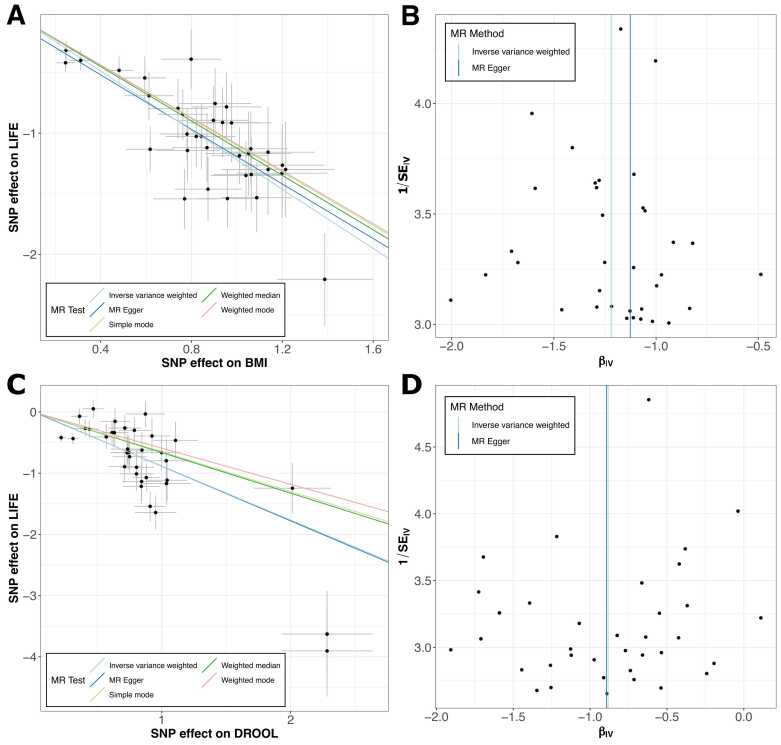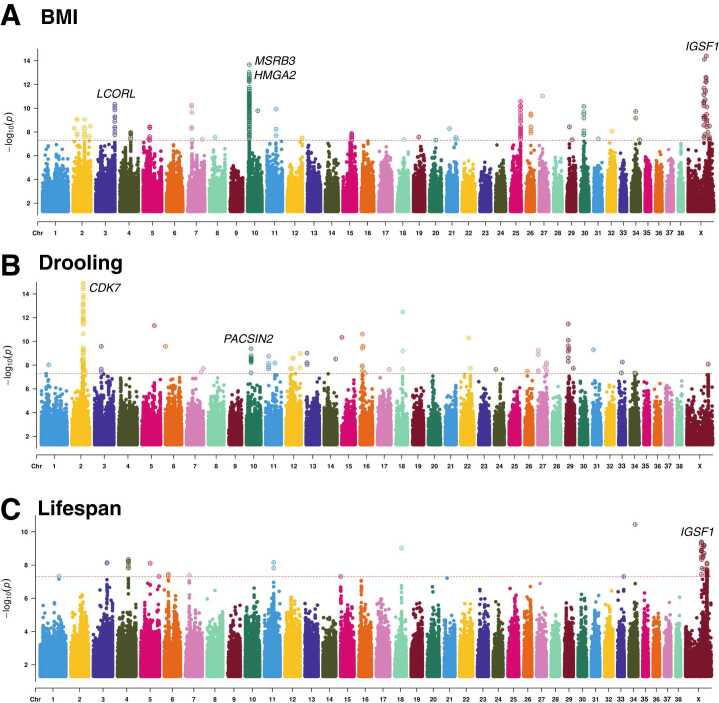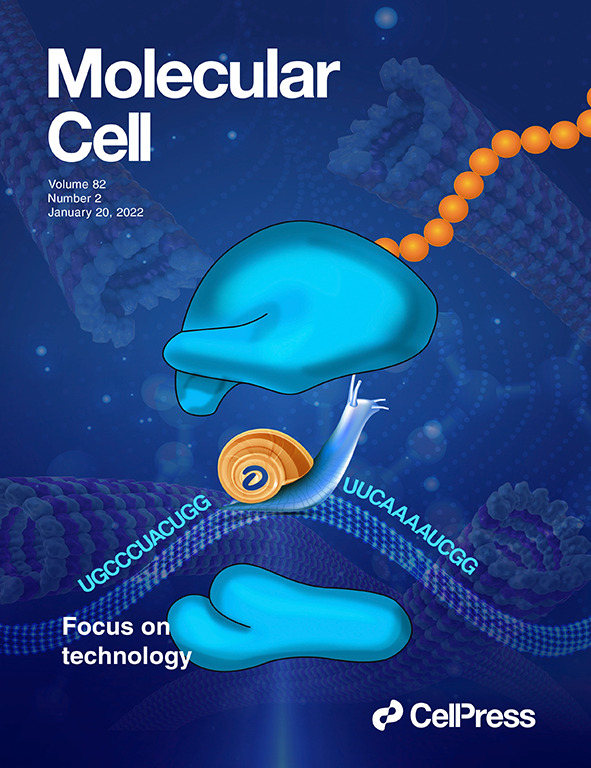全基因组统计证据阐明了狗的预期寿命候选因素。
IF 6.5
3区 生物学
Q2 BIOCHEMISTRY & MOLECULAR BIOLOGY
引用次数: 0
摘要
大型犬和重型犬的寿命往往较短,这一点已得到公认。在这项研究中,我们旨在确定除体型以外的其他特征是否与狗的预期寿命有关。我们利用美国犬业俱乐部(AKC)和其他同行评审来源的数据,将 149 个犬种的 20 种表型(包括体型、寿命、鼻比率和脱毛)汇编成一个单一的矩阵。分析表明,流口水可能与狗的寿命和体重指数有关。此外,全基因组关联研究(GWAS)采用了调整表型和统计验证方法,如孟德尔随机化(MR)。此外,通过对唾液腺进行差异表达基因(DEG)分析,我们可以观察到唾液分泌过多/流口水少与不同体型这两种情况下与唾液分泌过多相关的蛋白质。这一遗传分析表明,体型和流口水可能是影响寿命的候选因素。因此,我们确定了几个候选基因,包括IGSF1、PACSIN2、PIK3R1和MCCC2,作为影响长寿相关表型的潜在遗传因素。本文章由计算机程序翻译,如有差异,请以英文原文为准。



Genome-wide statistical evidence elucidates candidate factors of life expectancy in dogs
It is well-established that large and heavy dogs tend to live shorter lives. In this study, we aimed to determine whether traits other than body size are associated with the life expectancy of dogs. We compiled a dataset of 20 phenotypes, including body size, lifespan, snout ratio, and shedding, into a single matrix for 149 dog breeds using data from the American Kennel Club and other peer-reviewed sources. The analysis revealed that drooling might be associated with both the lifespan and body mass index of dogs. Furthermore, a genome-wide association study with adjusted phenotypes and statistical verification methods, such as Mendelian randomization. Additionally, conducting differential gene expression analysis with the salivary gland for the 2 cases, hypersalivation/less drooling vs various body sizes, we could observe the hypersalivation-related proteins. This genetic analysis suggests that body size and drooling might be candidate factors influencing lifespan. Consequently, we identified several candidate genes, including IGSF1, PACSIN2, PIK3R1, and MCCC2, as potential genetic factors influencing longevity-related phenotypes.
求助全文
通过发布文献求助,成功后即可免费获取论文全文。
去求助
来源期刊

Molecules and Cells
生物-生化与分子生物学
CiteScore
6.60
自引率
10.50%
发文量
83
审稿时长
2.3 months
期刊介绍:
Molecules and Cells is an international on-line open-access journal devoted to the advancement and dissemination of fundamental knowledge in molecular and cellular biology. It was launched in 1990 and ISO abbreviation is "Mol. Cells". Reports on a broad range of topics of general interest to molecular and cell biologists are published. It is published on the last day of each month by the Korean Society for Molecular and Cellular Biology.
 求助内容:
求助内容: 应助结果提醒方式:
应助结果提醒方式:


